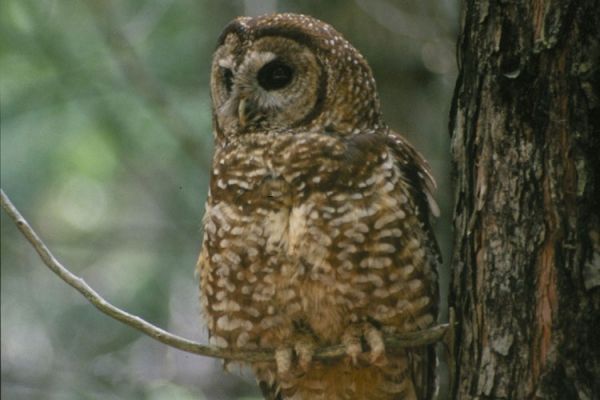Spotted owl populations are in decline all along the West Coast, and as climate change increases the risk of large and destructive wildfires in the region, these iconic animals face the real threat of losing even more of their forest habitat.
Spotted owl populations are in decline all along the West Coast, and as climate change increases the risk of large and destructive wildfires in the region, these iconic animals face the real threat of losing even more of their forest habitat.
Rather than attempting to preserve the owl’s remaining habitat exactly as is, wildfire management — through prescribed burning and restoration thinning — could help save the species, argues a new paper by fire ecologists and wildlife biologists and appearing today (July 2 ) in the journal, Frontiers in Ecology and the Environment.
The paper compares the plight of the owl with that of another iconic threatened species, the red-cockaded woodpecker, which has made significant comebacks in recent years — thanks, in part, to active forest management in the southern pine forests that the woodpecker calls home. Though the habitat needs of the two birds are different, both occupy forests that once harbored frequent blazes before fire suppression became the norm.
Read more at University of California – Berkeley
Photo: Spotted owls, native to the old-growth forests of the West Coast, have already lost much of their former habitat to logging. Without active forest management, the birds now risk losing even more of their remaining habitat to wildfire, a new paper argues. CREDIT: Tom Munton




